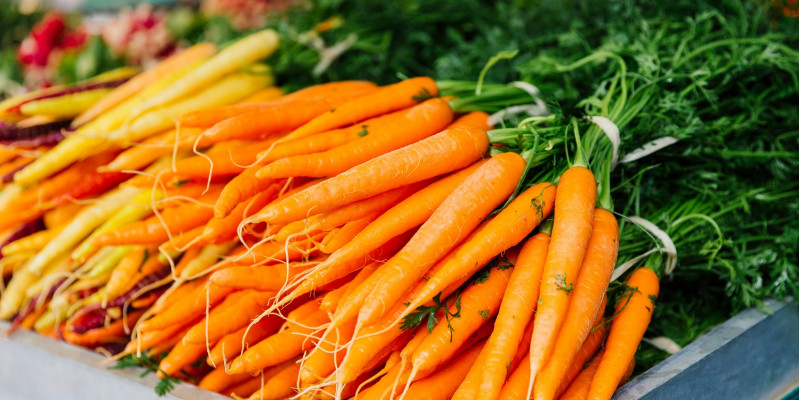Many self-imposed requirements in the fruit and vegetable business are detrimental to the environment and the climate. Broccoli, for example, is marketed according to a standard weight, apples with flawless skin only and with carrots or kohlrabi, the fresh green leaves only serve the purpose of appearance, but cause the vegetables themselves to wilt more quickly. Additional pesticides and fertilisers often have to be used to make fruit and vegetables look particularly fresh and picture perfect. Fruit and vegetables that do not meet trade specifications can usually not be sold as such. At best, they are processed into juice or used as animal feed, but often enough are simply ploughed under or disposed of in some other way.
Both consumers and producers, in addition to the environment, will benefit if businesses waive these requirements. Vegetables stay fresh longer without the leaf greens because water can no longer evaporate through the leaves. If fruit and vegetables of different sizes are available, consumers can buy more according to their needs and prevent food waste in the household. Producers can reduce their use of pesticides and fertilisers and sell a larger share of their produce to retailers. These are the findings of an UBA publication which proposes solutions put forth by experts. UBA’s President Dirk Messner said: "Statutory requirements are sufficient to ensure high-quality food. Retailers do not need to add to them unnecessarily. In order to reduce the environmental impact of fruit and vegetable growing, everyone must take action - including retailers.”
The market check by consumer protection centres reached similar conclusions. Petra Kristandt, managing director of the consumer protection centre in Lower Saxony, said: “There is a lot of scope for action to supply fresh fruit and vegetables in a way that lets consumers do their bit to protect the environment and climate. Businesses should take advantage of these opportunities.” The nationwide market check by the consumer protection centres took a closer look at select fruit and vegetables available at 25 supermarkets, organic food shops and discounters. The results show:
- Only about one quarter of apples and 18 percent of carrots are offered in Class II – produce with visible defects and in varying sizes. There was even less of a selection at discount shops (compared to supermarkets and organic food shops).
- Kohlrabi, cauliflower, iceberg lettuce and broccoli are priced and sold almost exclusively per unit rather than based on weight. It is a common practice that offers little incentive to choose smaller size produce.
- Kohlrabi and radishes are almost always sold with their greens, although this is only as a (supposed) sign of freshness and consumers often remove them already at the point of sale.
The market check also analysed the prevalence of cut-rate fruit and vegetables when extended storage at the market has caused a loss of optical quality. Only one quarter (28%) of shops offered such produce.
To prevent the environment and climate from being further burdened by unnecessarily strict regulations, UBA and the consumer centres recommend that:
- Businesses abandon self-imposed requirements concerning size, uniformity and appearance and take advantage of the flexibility which statutory marketing standards provide. Where classification is required, Class II should become the new standard.
- Fruit and vegetables are sold at a price based on weight and not per unit. Packaging and packaging size must be adapted to the natural size and weight of produce to do away with the strict requirements concerning uniformity of size.
- Kohlrabi, radishes and carrots are sold without the leaf greens.
Consumers must also accept the offer so that businesses can relax specifications in the long term. To achieve this, easily accessible and comprehensible information is needed, for example in customer magazines or directly at the point of purchase
 Click to enlarge
Click to enlarge
